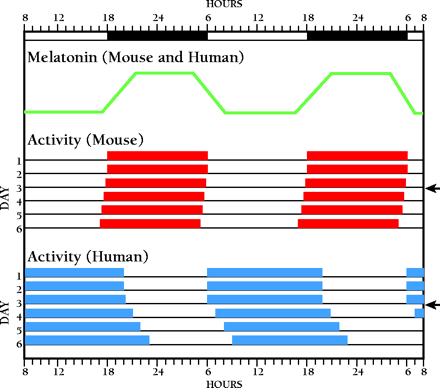
- Institution: Stanford Univ Med Ctr Lane Med Lib/Periodical Dept/Rm L109
- Sign In as Member / Individual
Circadian Photoreception in Humans and Mice

Circadian rhythms in mouse and human. The figure shows daily oscillation of physiological and behavioral variables in response to an idealized cycle of twelve hours of dark followed by twelve hours of light (LD12:12). The black bar at the top shows the dark phase at 1800 to 0600. Both nocturnal and diurnal organisms secrete melatonin during the nighttime. Red and blue bars indicate locomotor activity in mouse and human, respectively. Both organisms are placed under constant darkness (DD; indicated by arrow) at end of day 4. Under constant darkness, the locomotor activity of mice indicates an intrinsic period, or free-running period, of 23.7 hours. In human subjects, the intrinsic period under DD conditions is 25.1 hours; a recent report suggests that in humans the periods is 24.3 hours. From reference (5) .


